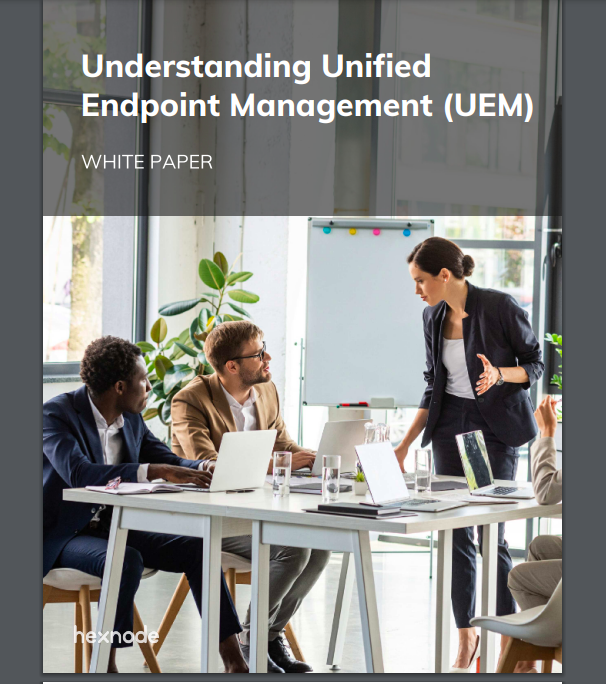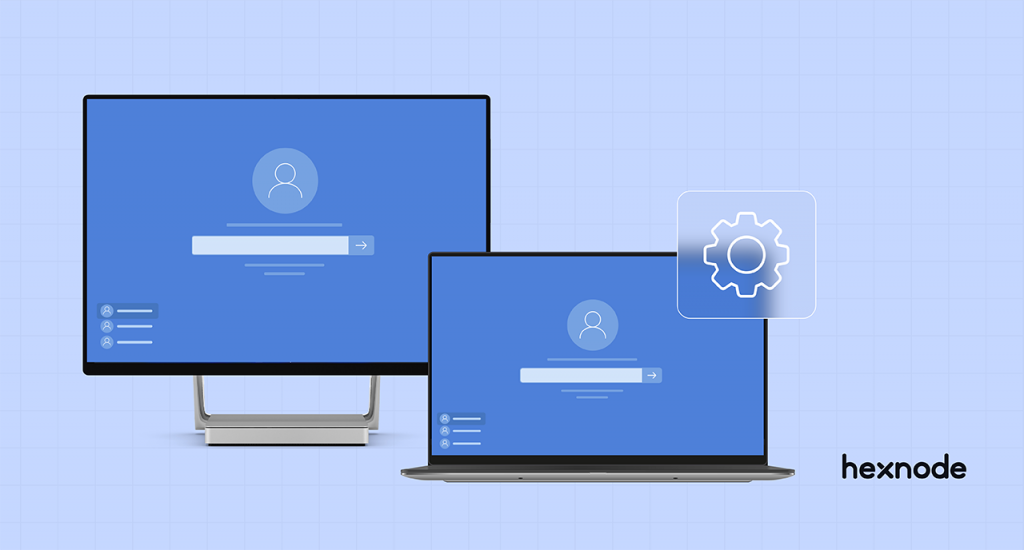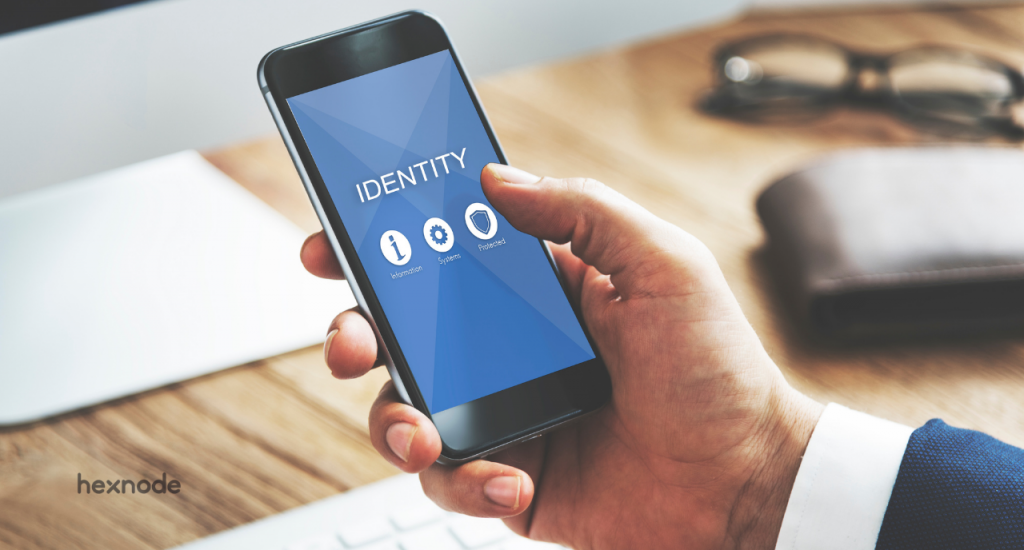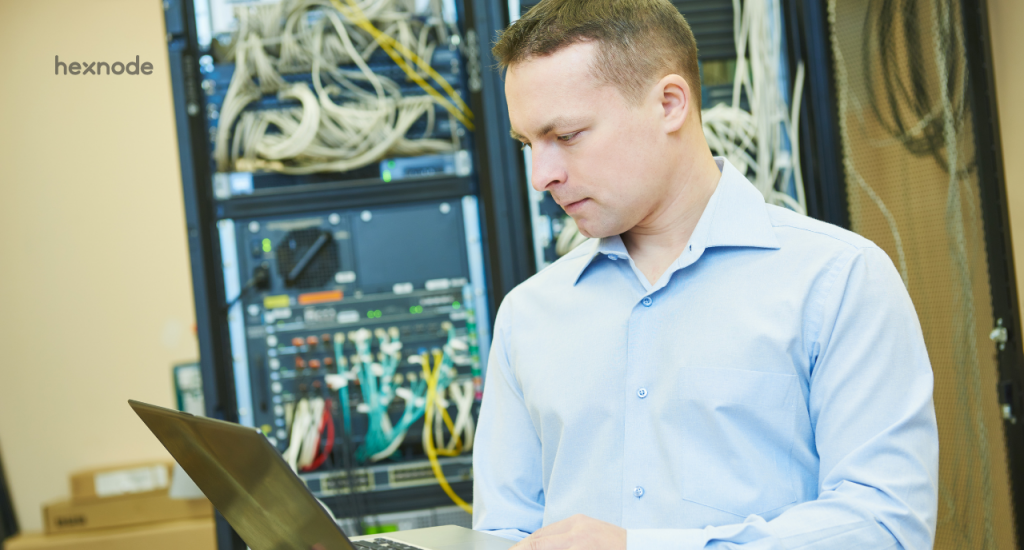While setting up the organization’s IT infrastructure, the IT team has to test multiple device management solutions to find out the best one for their use. RMM vs MDM is one of the common dilemmas that the IT admins have to address. The best RMM or MDM software (for your company) does not necessarily have to be the biggest in the market, filled with features, and expensive.
Rather, buying the one with the characteristics that best meet your technical and economic needs would provide better results. Yes, there is some common ground between the two types of solutions, but both are very different overall.
What is RMM?
Remote Monitoring and Management or RMM solutions enable admins to control computers, devices, applications, and web access from a remote location. It combines remote monitoring and remote management to allow you to control and protect business endpoints without ever having to move an inch from your seat. RMM software is a platform designed to assist managed service providers (MSPs) in managing their clients’ IT infrastructure and controlling their operations.
Why is RMM important?
- Remote monitoring entails seeing and recording your users’ network behavior from a centralized location.
- It continuously monitors the endpoints maintained by your company using compliance checks and status reports.
- Remote management allows you to control and manage corporate activities from a central location.
- An RMM solution also ensures that the network is functional and running as it should.
- Strong features and automation capabilities of RMMs enable companies of all sizes to attain enterprise-level monitoring.
- Patch management is essential for RMMs as MSPs must be capable of patching and reporting on Microsoft OS/software upgrades and third-party software. RMMs are able to validate patches before they are deployed. It will guarantee that the latest updates do not disrupt the software on the system once new patches are released regularly.
- With their network scans, they can keep an up-to-date database of active systems with valuable information like switchport locations, VLANs, OS versions, and many more.
- RMMs also provide an alerting system to keep you up to date regarding vulnerabilities that appear on your client’s system before they bring it to your notice.
https://www.hexnode.com/blogs/top-10-rmm-solutions-for-2021/?utm_source=hexnode_blog_rmm_vs_mdm&utm_medium=referral&utm_campaign=blog_embed
What is MDM?
A Mobile Device Management (MDM) solution is a one-stop solution that allows IT to automate, regulate, and safeguard organizational policies on managed devices. Furthermore, it allows devices such as mobile phones and laptops to access corporate information securely. MDMs offer device management and restriction capabilities that simplify IT administrators’ lives. These devices may be onboarded to the device console via no-touch onboarding methods, the Apple Configurator, etc. When you implement an MDM solution, you get all of your devices’ critical information in one place. This allows you to break free from pointless iterations of collecting device data and increase end-user productivity.
Why is MDM important?
- MDMs enable the IT staff to enroll devices in bulk at once and make them available for users immediately.
- An MDM allows an IT admin to create and apply policies to devices via OTA (Over-The-Air) transmission.
- It assists IT in protecting susceptible devices by utilizing several security features. An MDM solution’s threat management functionalities aid in the protection of data, networks, apps, and physical dangers.
- MDMs can track the location of your devices and even wipe them if needed.
- More or less, every business will have compliance regulations that must be implemented on devices in its network. You can use an MDM to determine if a device complies with the regulations.
- One can control apps, identify devices, manage configurations and also set up endpoints in kiosk mode, with a sophisticated MDM.
- Most MDM systems include device encryption features to keep data and information secure.
https://www.hexnode.com/blogs/top-10-mdm-solutions-2020/?utm_source=hexnode_blog_rmm_vs_mdm&utm_medium=referral&utm_campaign=blog_embed
Similarities between RMM software and MDM software
As mentioned initially, RMM and MDM have a few things in common. First of all, these solutions are intended to simplify device management for IT admins. Neither of them needs IT admins to handle the device physically. Next, both solutions can control user access by allowing individuals to use just the required features. Furthermore, each software has remote management features and can monitor a unique set of device actions. For example, An MDM solution can monitor device compliance whereas the RMM solution can monitor the network and systems.
Although there are a few similarities, they are not the same.
RMM vs MDM: What sets them apart?
- The fundamental contrast between both software solutions is that, although MDM specializes in managing devices, RMM solutions are far more extensive, including network and system monitoring.
- An MDM solution can’t replace an RMM solution because you may not have direct remote access to the devices in the case of an MDM, whereas RMM excels at launching scripts automatically depending on various warnings and triggers for auto-remediation.
- RMM can also provide you with all the logs and performance data for debugging that MDM may lack.
- On the other hand, MDMs can handle automatic provisioning and deployment of devices, as well as BYOD management, something which RMM cannot do.
- The MDM is in charge of all app distribution and device security setup, including the installation of an RMM.
As we can see, both of these solutions benefit an organization in unique ways. Once again, we are back to where we started, which one to choose. Wouldn’t it have been better if a solution comprising the benefits of both RMM and UEM existed? Actually, there is, and it is known as Unified Endpoint Management (UEM).
UEM – A unified solution with benefits of both
A UEM solution combines all necessary features of device management into a single console. UEM offers both RMM and MDM functionalities. For example, a UEM offers essential RMM features such as remote management tools, configuring and delivering software upgrades, and report generation. As for MDM, all functions of an MDM can be found in a UEM. For example, using a UEM, you can enroll devices in bulk, restrict or allow applications and websites, set passwords remotely, and control users, user groups, numerous device platforms, and applications. Furthermore, UEMs support integration with various client management tools (CMTs).
Looking at all these benefits, you might think UEMs would cost a fortune. Well, that’s not true at all.
Remotely managing hundreds of corporate devices is not an easy task for an IT team. Unified Endpoint Management (UEM) solutions have made the whole device management process simpler for enterprises and the IT admins.

Featured resource
Understanding Unified Endpoint Management (UEM)
For organizations searching for a unified RMM and MDM product, Hexnode UEM is a good choice. They don’t have to spend time learning each tool, synchronizing integrations, and tracking down a slew of services when a UEM like Hexnode can handle it all for a fraction of the cost.
Conclusion
Organizations can opt for either RMM or MDM, depending on their requirement. Both are different and so their impact on a business is also different. Therefore, IT admins must carefully choose a solution after evaluating their current setup. As for the solution of the RMM vs MDM debate, the winner is a UEM. After all, who wouldn’t want to choose the one with the most benefits at an affordable rate?
Looking for a suitable UEM solution?
Why don't you try out Hexnode UEM to monitor and manage your organization's devices?
Start your free trial now





